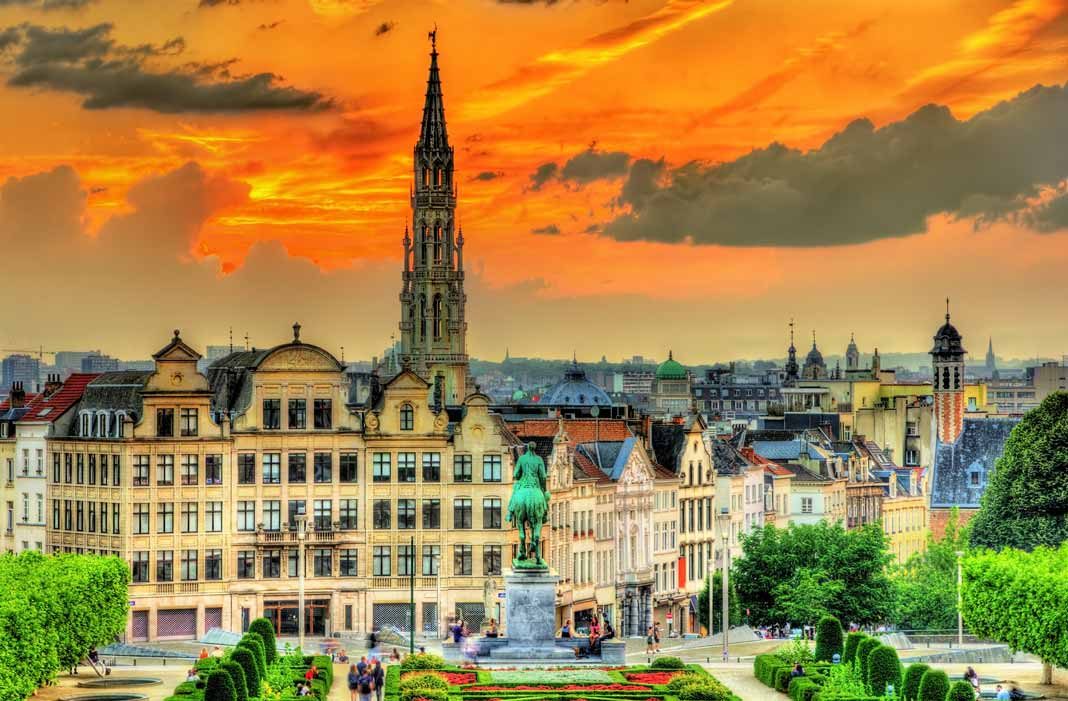Belgium is a tiny country; this cannot be denied. But how many tourist attractions does Belgium have then? There’s a stereotype of Belgium being small and annoying. Most of the people associate it with politics and beer. Brussels is the headquarters of the European Union and NATO, so it’s understandable that after thinking “Belgium,” the next word coming to one’s mind will be “politics,” but let’s not dive into this subject. Beer, yes, it’s there, and it’s marvelous. There’s more to Belgium than just that. This little country is a paradise for art-lovers, linguists, and foodies.
There are plenty of UNESCO sites, new festivals happening all the time, delicious traditional dishes, charming streets and other tourist attractions. Belgium has three national languages (Dutch, French, and German), so communication just can’t be dull. The country’s small, but filled with a variety of interesting sites. When you go to Belgium, tourist attractions just pop out in front of you. There’s not even need to search. Everything’s just nearby. Besides, the country’s in a good economic shape. The infrastructure is excellent, buildings well-preserved, streets stay clean, events are being held and the art’s flourishing.
The Art
If you’re into arts, you’ll have a busy time in Belgium. Tourist attractions there are often all about art. Have you heard of René Magritte? If you’re already a fan of this outstanding Belgian artist, you’ll be happy to know in Brussels there’s a museum dedicated to his work. If you’re not a fan yet, you might become one when you visit it. A must-see is also The Horta Museum. That’s the place where you can learn about the life and work of Victor Horta, a Belgian Nouveau architect. The enchanting Art Nouveau architecture can be seen in more places around Brussels; it’s considered to be the capital of this architectural style. When you walk around the town, don’t forget to take a look at the Hannon House and Solvay Library, they’re gorgeous!
The Cuisine
Food is also one of the most famous tourist attractions. Belgium is known for its beer. It has already been mentioned, but since this beer is so good, it deserves a bit more attention. The variety is just endless; beer comes in different colors, flavors, and sizes. You might get surprised sometimes when you look at the menu. Besides of the modern, mass-produced brands, such as Stella Artois or Hoegaarden, there are also lesser-known beers, and Belgians get very creative when it comes to naming them. You can have a taste of such delights as Mort Subite (Sudden Death) or Verboden Vrucht (Forbidden Fruit).
Mussels are another Belgian specialty. They’re usually cooked with white wine and onions or celery and served in a steaming pot. French fries, even though their name suggests it was French people who invented them, are Belgian idea, or at least that’s what Belgians often claim. Hence this world-known fast-food is something traditional for Belgians. As for desserts, you must try Belgian chocolate; it’ll sweeten up your day.
Towns & Countryside
Belgium has three federal regions: Brussels (bilingual), Flanders (Dutch-speaking) and Wallonia (French-speaking). In both Flanders and Wallonia, you can find charming towns, yet it’s Flanders that has more of them, while Wallonia is more rural. Antwerp is the second biggest city in Belgium. Tourist attractions in Antwerp are not only numerous but also varied. Art (Rubens first of all, there’s a museum dedicated to this genius painter), fashion, a large port, and diamonds. Yes, Antwerp is an important center of diamond industry, there’s even a district called the Diamond District.
Some of Flanders most famous cities are also Bruges and Ghent. The first one is incredibly romantic with its canals and charming buildings beautifully lit at nights. Ghent has canals too and a cozy medieval center. There’s an artsy feeling to this town due to the presence of many artists and creative students. In Wallonia there are some lovely towns too, like its capital Namur, yes it’s mostly the countryside that makes Wallonia special. The region Ardennes with its magical woods and rolling hills, the Meuse river and numerous castles located on its banks, little villages and natural food you can taste there, all of that and more makes Wallonia a great destination for nature-lovers.




